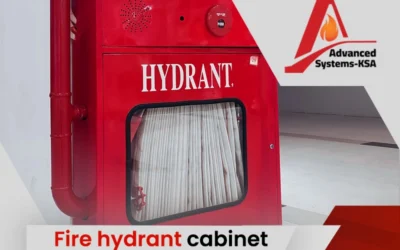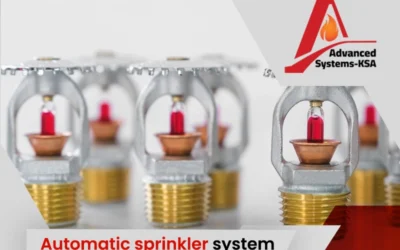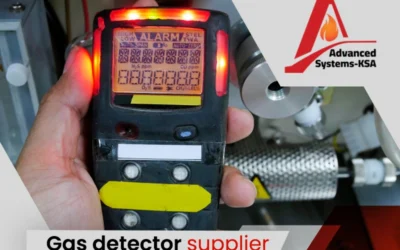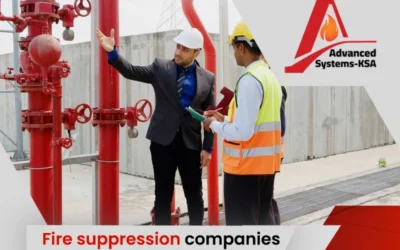Fire safety is a paramount concern in any environment, whether residential, commercial, or industrial. Implementing effective firefighting systems is crucial in mitigating the risks associated with fires. It is essential to understand the different types of systems available and how they each help address unique fire risks.
This article will explore the question, “How many types of firefighting systems?” and the diverse range of systems designed to combat different types of fires.
Water-Based Fire Suppression Systems
-
Wet Pipe Sprinkler Systems
Wet pipe sprinkler systems, the most prevalent water-based fire suppression method, maintain a constant water supply within pipes. This ensures an immediate response to fire events, making them ideal for various settings. Their straightforward design, quick response time, and low maintenance requirements contribute to their reliability in safeguarding commercial buildings, residential spaces, and warehouses.
-
Dry Pipe Sprinkler Systems
Designed to address freezing concerns, dry pipe sprinkler systems utilize pressurized air or nitrogen instead of water, releasing water only when a sprinkler head is activated. This innovative approach makes them suitable for environments where freezing is risky, providing effective fire protection in unheated warehouses or cold climate parking garages.
-
Pre-Action Sprinkler Systems
Pre-action systems require a two-step activation, filling pipes with air first and releasing water upon fire detection. It is suitable for areas sensitive to accidental discharges.
-
Deluge Systems
Deluge systems use open sprinklers connected to a water supply for rapid, simultaneous water application. Effective in high-hazard environments with a need for intense water discharge.
-
High-Pressure Water Mist Systems
Utilizing fine water droplets and high-pressure water mist systems cool fires, displace oxygen, and inhibit combustion reactions. Ideal for environments where water damage is a concern.
Read More: Fire Hydrant Pump Prices
Gas-based fire suppression systems
Gas-based fire suppression systems, including clean agent and carbon dioxide (CO2) systems, play a pivotal role in advanced fire safety. Clean agent systems employing gases like FM-200 or inert gases swiftly reduce oxygen levels, extinguishing fires without residue. CO2 systems are highly effective for flammable liquids and electrical fires, displacing oxygen to starve the fire.
These systems find applications in data centers, server rooms, museums, and industrial facilities, offering rapid and efficient suppression without water damage. While advantageous, careful consideration is crucial due to safety concerns associated with certain gases. This evolving technology continues to refine gas-based systems for enhanced fire protection.
Foam-based fire suppression systems
Foam-based fire suppression systems are essential for effectively controlling flammable liquid fires, offering versatility and rapid response in high-risk environments. Foam sprinkler systems release a blanket of foam over fuel surfaces, preventing the release of flammable vapors commonly applied in chemical plants and industrial settings. High-expansion foam systems designed for enclosed spaces generate large volumes of foam to smother fires in places like aircraft hangars.
The advantages of foam-based systems lie in their quick and efficient suppression, particularly tailored for flammable liquid hazards. However, applying foam may pose challenges regarding clean-up and potential water damage. Thorough risk assessments are crucial to determining the most suitable foam type and concentration for specific fire risks, ensuring a comprehensive fire safety strategy in diverse industrial and commercial settings.
Read More: The Foam Fire Suppression for Sale in KSA
Powder-based fire suppression systems
Powder-based fire suppression systems, exemplified by dry chemical systems using ABC or BC powders, are versatile solutions that interrupt combustion processes in various fire classes. Their adaptability makes them valuable in industrial facilities, commercial buildings, and electrical rooms where fire hazards exist. These systems are essential for comprehensive fire safety and offer a rapid and effective response. However, their use may result in residue and clean-up challenges, emphasizing the importance of thorough risk assessments and carefully selecting powder types tailored to specific fire risks to ensure optimal suppression in diverse environments.
How many types of firefighting systems exist?
Other systems may include:
- Specialized Systems: CO2 systems effectively tackle electrical and flammable liquid fires, suppressing flames without residue. Fire hydrant systems provide essential water sources for manual firefighting efforts in various settings.
- Fire Extinguishers: portable devices with specific agents for small-scale firefighting, including water, foam, dry powder, and CO2, tailored for distinct fire classes.
In conclusion, the question “How many types of fire fighting systems?” unveils various solutions tailored to address different fire hazards. Implementing the right combination of fire suppression systems based on a thorough risk assessment is crucial for ensuring the safety of occupants and assets. Advanced Systems provides tailored firefighting services. Contact us now.
Read Also :
Fire Cabinet Hose Suppliers in KSA
